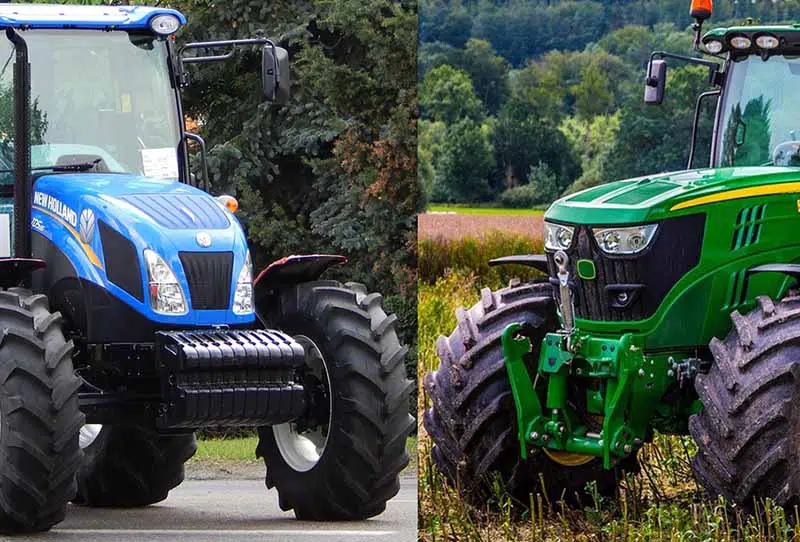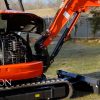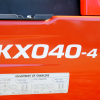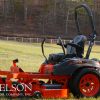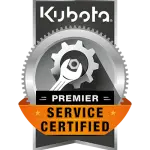John Deere and New Holland are cutting-edge brands for new agriculture, modern construction, small-acreage farming, and many odd jobs that fall in between these industries.
Both brands offer quality products and approach “job-done” in similar ways. How you approach “job-done” is where the differences lie. That is the essence of what this blog is about — the differences as they apply to your task list.
Suppose you are a small-acreage farmer or a mega-builder in the residential construction industry. In that case, there are some interesting differences between the quality equipment of both John Deere and New Holland.
An excellent example of what we mean illustrates our point in comparing the John Deere 310SL and the New Holland B95C Backhoes.
Both are fantastic machines, but if you need more bucket digging force, you get a little more from the New Holland B95C —12,933 pounds vs. John Deere’s 12,356 pounds of bucket digging force. Another difference that points out the strength of the New Holland design is the Backhoe bucket capacity range. For John Deere, it is 1.2-1.31 cubic feet for the standard equipment. Heavy Duty options are available for the JD. For New Holland B95C, it is 3.7-13.7 cubic feet. That’s some range and a lot of differences. If you need to move more rock, manure, gravel, or soil, you will do so with the New Holland B95C. The John Deere backhoe is perhaps a better choice if you need to dig a narrow trench. New Holland construction equipment keeps pace and sometimes outshines John Deere.
For loader specs, the breakout force of the New Holland B95C (12,933 cubic feet) tops John Deere’s 310Sl (12,356 cubic feet.) [1] It’s a slight difference, but that extra bucket digging force is handy when you have to work all day moving stubborn objects.
You will gain 4 HP with the Deere over the B95C. There are many similarities between these two. An excellent point to make here is not that one is better than the other. Instead, one is better for what you need to get done. How they stack up depends on how you work, what you do, and your project load.
Compact Track Loaders
Here we look at the John Deere 325G and the New Holland C337. We found the New Holland C337 to have 74 Gross HP compared to the 74 gross HP of the 325G. For net HP, the John Deere 325G has 70 HP, and the New Holland C337 has 68 Net HP. Torque is a game-changer as the John Deere 325G has a peak of 207 lb-ft of torque compared to the peak 232 lb-ft of torque offered by the New Holland C337.
For Track Width, New Holland offers tracks that are 17.7 inches wide to the 12.6-inch tracks on the John Deere 325G. John Deere offers a 15.8″ track width that is optional. That difference means better traction on hills and in mud.
75 HP Tractors
Here we look at John Deere 5075e vs. New Holland Workmaster 75. For starters, they both offer almost the same max horsepower at 74.8 for the John Deere and 74 for the New Holland. Physically, both are 3-cylinder engines. The John Deere is available in 4×2 with an option for a 4×4 drivetrain, whereas the New Holland Workmaster 75 is available in 4×4.
In short, the two tractors are similar. Both are excellent brands, but you may find the New Holland a bit more cost-effective and a little better at handling the rough terrain around North Georgia. The 4X4 option makes a big difference for the hill country, working in wet conditions and even moving the same loads.
50 HP Tractors
In the 50 HP range, we compare the John Deere 5055e with New Holland Workmaster 50. First, the John Deere 5055E offers about two additional HP over the New Holland Workmaster 50.
In terms of the differential, the John Deere 5055E offers 2WD, 4×4, and 4WD options. The New Holland Boomer 50 offers 4×4. In addition, the New Holland is slightly smaller with a 17,500 mm total length compared to the 20,500 mm total length of the John Deere; that’s a plus for the New Holland as it means it can get into smaller spaces around hobby farms and tighter areas.
When comparing the stats on both the John Deere 5055E and the New Holland Workmaster 50, you find the two machines very similar.
Who has the best Warranty?
Comparing Warranties Between New Holland and John Deere is another big difference. First, New Holland has an online version of its warranty for compact tractors. Second, they offer a standard warranty for their Boomer 35/40/45/50/55 compact tractors. Free of charge – Boomer Guard6 Limited Warrant provides 6-years of coverage that includes two years of bumper-to-bumper coverage and four years of powertrain coverage. [2]
You can preview the John Deere Warranty online or at the dealer. If you are making a significant investment, you should know if the seals are covered, the hydraulic system is covered, and the coverage for attachments. [3]
Can we tell you who has the best warranty? Sadly, no. However, it speaks volumes about service.
Parts and Maintenance
You can get New Holland Parts locally. They offer one of the better parts distribution systems. For John Deere, you have to drive to the nearest dealer, which can be an hour or more away. With New Holland, give us a call; we have parts, answers, and a dedicated service team. Most of our techs have been with us for 10+ years.
In simple English with New Holland, you have a local service team with parts supply and a deep dedication to the local farming, Ag, and Construction communities. However, if you opt for a John Deere, you have a long drive to the nearest service center, which means time out of your day and more on your to-do list.
What are strengths vs. weaknesses?
The two brands are very comparable. So you don’t find a lot of variance in comparing one New Holland model to an equivalent John Deere Model. They are going to be near to each other in weight, power, and performance. There are minor differences that play more to how you work and what you need from the machine.
A significant difference can be pricing, as the New Holland brand seems less expensive than many similar John Deere models. The difference in pricing makes all the minor differences more critical. John Deere is a well-known brand, but New Holland also has a proven track record. New Holland, until recently, made the skid steers for John Deere.
When you add into that mix the availability of local service versus driving to the nearest John Deere service center, John Deere seems less.
We started with the term “Job Done” and found that there are issues in getting the job done along the way. One would be waiting on parts vs. getting local service and parts. Another could be the higher cost of ownership from one brand versus the other. It is the little things that make significant differences between New Holland and John Deere. A piece of equipment is an investment, and one brand is traditionally more expensive than the other. Given the pricing of the two brands and the closeness in capabilities, quality, and technology, there is only one choice — New Holland.


